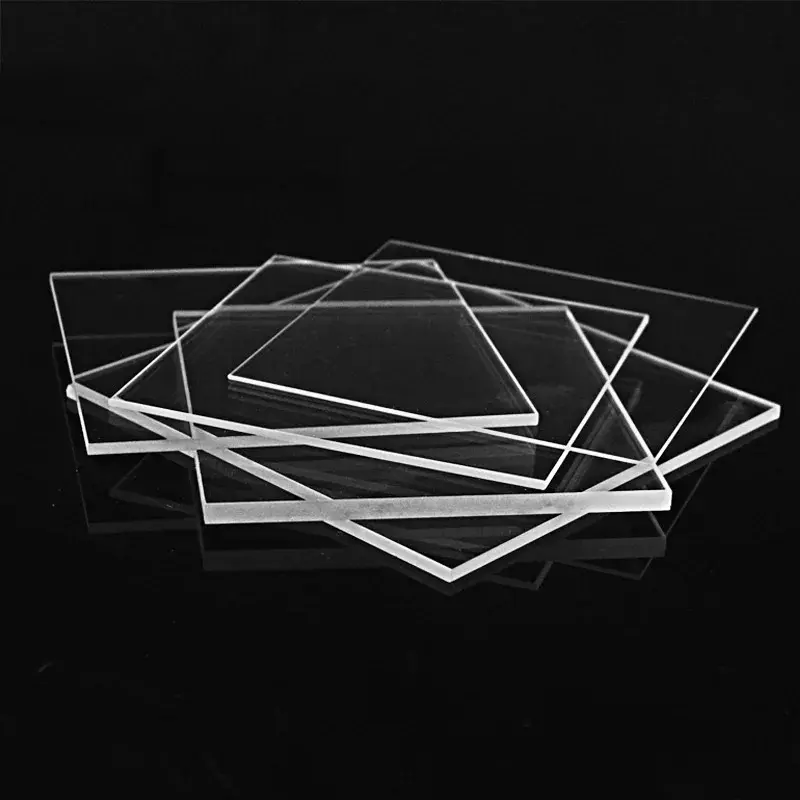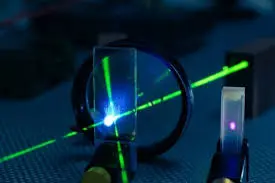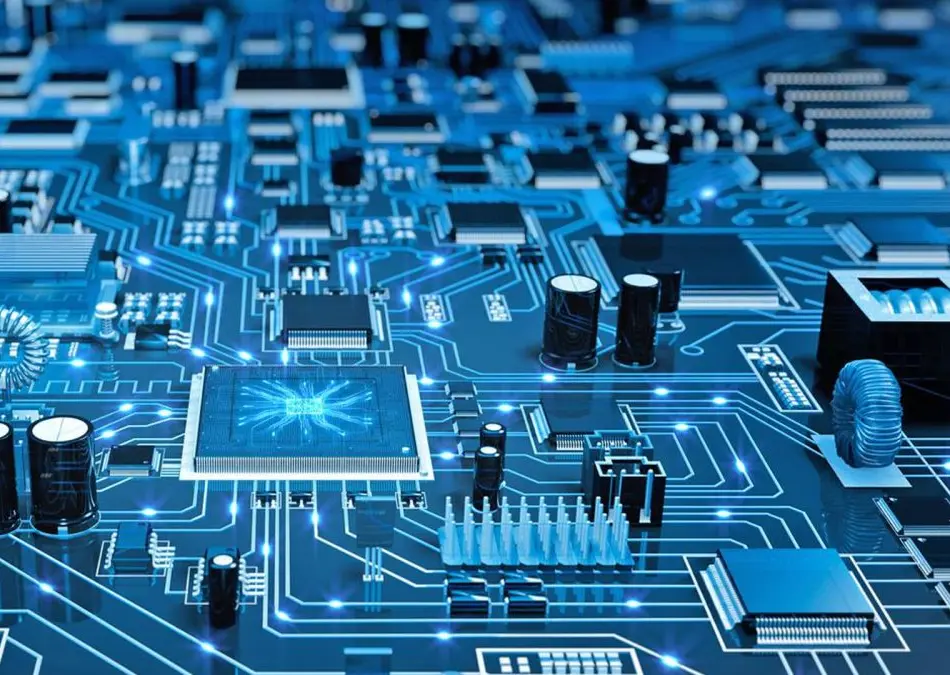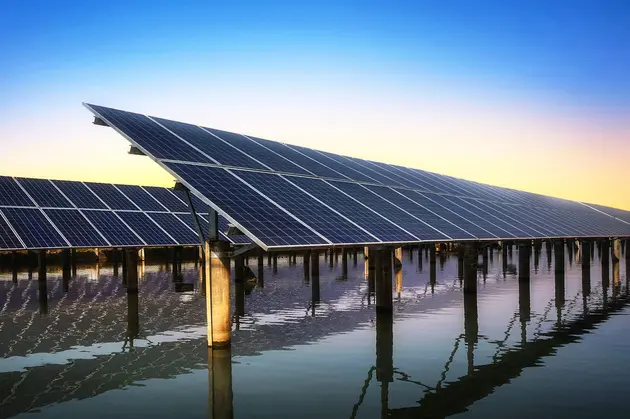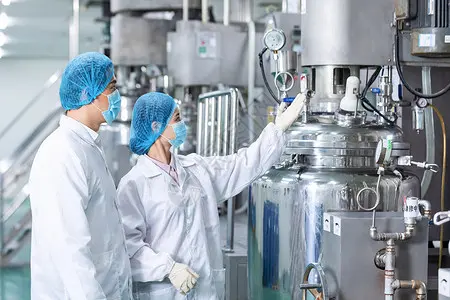Quartz glass sheets are a specialized type of glass characterized by high transparency, high-temperature resistance, and strong chemical stability. They are widely used in fields such as optical fiber communication, semiconductor manufacturing, and medical equipment. Renowned for their exceptional optical properties, low thermal expansion coefficient, and excellent electrical insulation, quartz glass sheets are an indispensable material in various high-tech applications.
| Length | Width | Thickness |
|---|---|---|
| 5mm | 5mm | 1mm |
| 10mm | 10mm | 0.5mm |
| 10mm | 10mm | 1mm |
| 10mm | 10mm | 2mm |
| 12mm | 12mm | 1mm |
| 15mm | 15mm | 0.5mm |
| 15mm | 15mm | 1mm |
| 15mm | 15mm | 2mm |
| 15mm | 15mm | 3mm |
| 20mm | 20mm | 0.5mm |
| 20mm | 20mm | 1mm |
| 20mm | 20mm | 2mm |
| 20mm | 20mm | 3mm |
| 25mm | 25mm | 0.5mm |
| 25mm | 25mm | 1mm |
| 25mm | 25mm | 2mm |
| 25mm | 25mm | 3mm |
| 30mm | 30mm | 0.5mm |
| 30mm | 30mm | 1mm |
| 30mm | 30mm | 2mm |
| 30mm | 30mm | 3mm |
| 35mm | 35mm | 1mm |
| 35mm | 35mm | 2mm |
| 35mm | 35mm | 3mm |
| 40mm | 40mm | 0.5mm |
| 40mm | 40mm | 1mm |
| 40mm | 40mm | 2mm |
| 40mm | 40mm | 3mm |
| 45mm | 45mm | 1mm |
| 45mm | 12mm | 1mm |
| 45mm | 12mm | 2mm |
| 35mm | 35mm | 2mm |
| 50mm | 50mm | 0.5mm |
| 50mm | 50mm | 1mm |
| 50mm | 50mm | 2mm |
| 50mm | 50mm | 3mm |
| 50mm | 50mm | 4mm |
| 50mm | 50mm | 5mm |
| 60mm | 60mm | 1mm |
| 60mm | 60mm | 2mm |
| 60mm | 60mm | 3mm |
| 70mm | 70mm | 2mm |
| 70mm | 70mm | 3mm |
| 70mm | 70mm | 5mm |
| 75mm | 25mm | 0.5mm |
| 75mm | 25mm | 1mm |
| 75mm | 25mm | 2mm |
| 80mm | 80mm | 1mm |
| 80mm | 80mm | 2mm |
| 80mm | 80mm | 3mm |
| 80mm | 80mm | 4mm |
| 100mm | 100mm | 1mm |
| 100mm | 100mm | 1.5mm |
| 100mm | 100mm | 2mm |
| 100mm | 100mm | 3mm |
| 100mm | 100mm | 5mm |
| 100mm | 100mm | 0.5mm |
| 100mm | 100mm | 1mm |
| 100mm | 100mm | 2mm |
| 100mm | 100mm | 3mm |
| 100mm | 100mm | 5mm |
| 150mm | 150mm | 2mm |
| 150mm | 150mm | 3mm |
| 150mm | 150mm | 5mm |
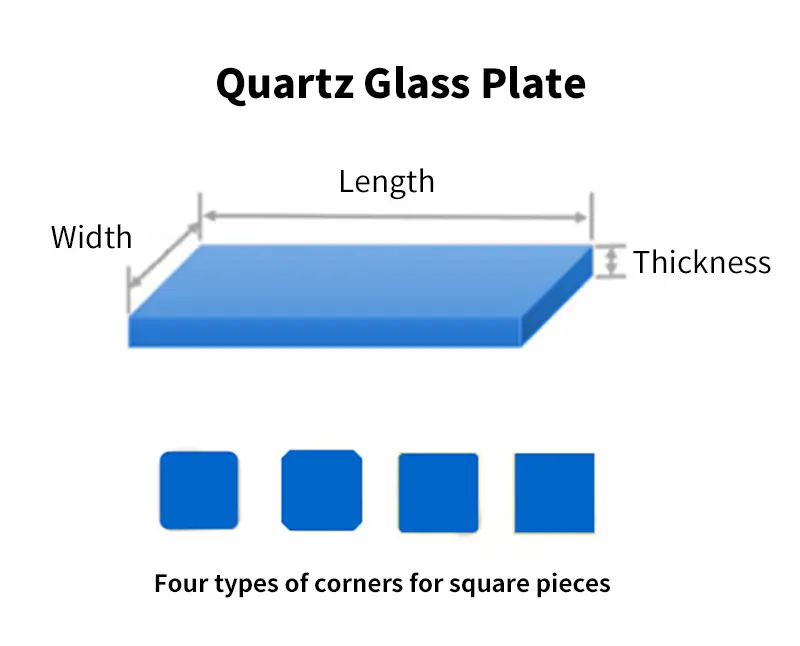
- ayment method: By wire transfer or advance payment, depending on the quantity of the order.
- Delivery time: According to the order quantity.
- Transportation method: Sea freight or air freight, depending on the customer.
Remarks:
To confirm the order, The following parameters need to be provided: ① Square: length, width, thickness ② Circle: diameter, thickness ③ Accuracy ④ Quantity
| Property Content | Property Values |
|---|---|
| SiO2 | 99.99% |
| Density | 2.2×10³ kg/cm³ |
| Hardness | 5.5 - 6.5 Mohs' Scale 570 KHN 100 |
| Tensile Strength | 4.8×10⁷ Pa (N/mm2) (7000 psi) |
| Compression Strength | >1.1×10⁹ Pa (160,000 psi) |
| Coefficient of Thermal Expansion | 5.5×10⁻⁷ cm/cm·°C (20°C-320°C) |
| Thermal Conductivity | 1.4 W/m·°C |
| Specific Heat | 670 J/kg·°C |
| Softening Point | 1730°C (3146°F) |
| Annealing Point | 1210°C (2210°F) |
| Strain Point | 1120°C (2048°F) |
| Work Temperature | 1200°C (2192°F) |
| Electrical Resistivity | 7×10⁷ ohm cm (350°C) |
| Size | Customized |
| Logo | Customized Logo Accept |
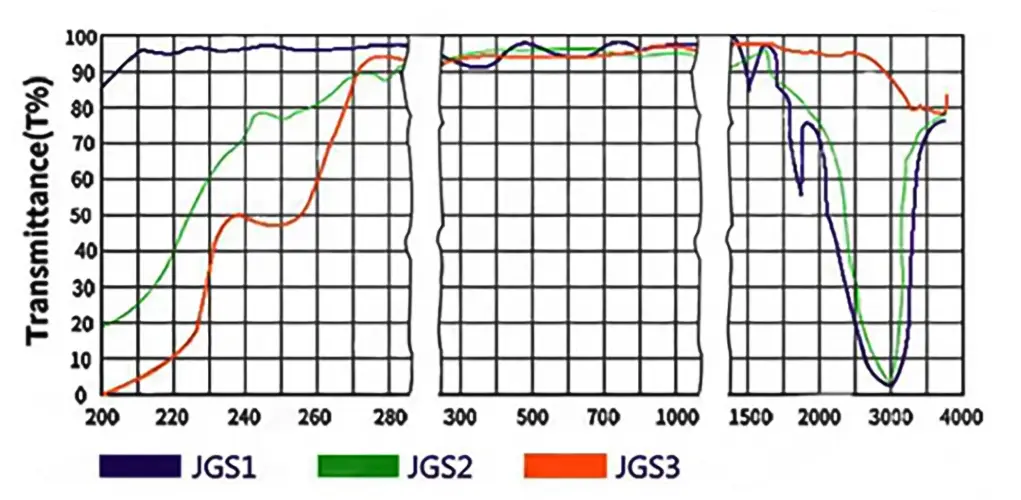
JGS1
Commonly known as UV-grade fused silica, this material exhibits exceptionally low dispersion and very high transmittance in the ultraviolet (UV) spectral range.
JGS2
Similar to JGS1, but may have variations in specific performance parameters such as transmittance and thermal expansion coefficient, depending on the manufacturer’s standards.
JGS3
Typically used in applications requiring higher purity or specialized performance characteristics. Specific performance parameters can vary based on the manufacturer.
Dispersion Characteristics
JGS1 and JGS2 quartz sheets exhibit excellent dispersion properties in the ultraviolet (UV) spectral range, effectively separating UV light of different wavelengths. This makes them ideal for manufacturing high-performance optical components.
Transmittance
All three types of quartz sheets have high transmittance to UV light, especially within specific wavelength ranges. For example, JGS1 has very high transmittance from 185 nm to 2,500 nm. This makes them the preferred materials for manufacturing UV lasers, UV spectrometers, and optical filters.
Chemical Stability
Quartz sheets possess excellent chemical stability and can withstand harsh conditions, including acids, alkalis, and high temperatures. Therefore, they are suitable for manufacturing chemical reactors, high-temperature furnace windows, and chemical analysis instruments.
Low Thermal Expansion Coefficient
These quartz sheets have very low thermal expansion coefficients, exhibiting minimal response to temperature changes. This is crucial for the stability of high-precision optical components.
Application Scenario
Quartz sheets exhibit excellent high-temperature resistance, corrosion resistance, thermal stability, and light transmittance. Its softening point is approximately 1730°C, and it can be used continuously at 1100°C, with short-term usage up to 1450°C. Quartz glass is highly resistant to acids, with the exception of hydrofluoric acid, and demonstrates high resistance to chemical reactions with most other acids. Quartz sheets have a very low thermal expansion coefficient, enabling them to withstand rapid temperature changes without fracturing. They also exhibit good light transmittance across the entire UV to IR spectrum, with a visible light transmittance exceeding 93%.
Based on optical properties, quartz sheets are classified into three categories: far-ultraviolet (FUV) optical quartz glass (JGS1), ultraviolet (UV) optical quartz glass (JGS2), and infrared (IR) optical quartz glass (JGS3). These different types of quartz glass exhibit variations in transparency, absorption band positions, etc., in the UV and visible spectral ranges.
The processing of quartz sheets includes rough processing steps such as raw material sorting, rod bonding, seed crystal cutting, and rounding. This is followed by grinding stages, such as rough grinding, medium grinding, and fine grinding. Afterwards, polishing and cleaning processes are conducted to ensure surface quality and stability of the wafers. Finally, mounting and die-bonding involves fixing the quartz sheets with applied electrodes and applying conductive adhesive to the contact points between the electrodes and metal pads to achieve electrical connection.
Frequently asked questions
Quartz glass is a hard and brittle material with excellent physical and chemical properties, extremely high mechanical hardness, good electrical insulation, high temperature and corrosion resistance, low and stable delay performance, good light transmittance, etc. It is widely used in semiconductors, optics, electricity, chemistry, aerospace, automobiles and other fields. Hard and brittle materials are difficult to process, and many fields urgently need cutting processes with small edge collapse, less material loss, low cross-section roughness, and a wide cutting thickness range. The traditional cutting method of quartz glass is mechanical cutting, that is, wheel cutting. Non-traditional cutting methods include water jet cutting, electrochemical discharge wire cutting, continuous laser cutting, etc. Mechanical cutting has low cost, but the contact between the wheel and the material causes large tool wear, and the material is easily contaminated by the tool. Quartz glass is prone to edge collapse, microcracks, and residual stress, which affects the strength and performance of the material! It is difficult to achieve curve cutting and requires post-processing, such as grinding and polishing. Laser cutting does not directly contact the material, has no contact stress, and can perform complex curve cutting. Picosecond laser has the advantages of small spot diameter, high precision, short action time with the material, and small action area, and is suitable for the processing of hard and brittle materials.
。

